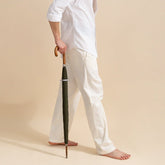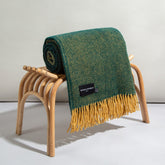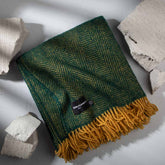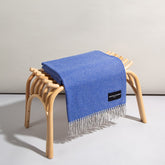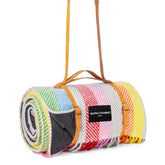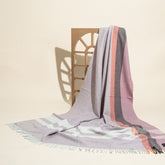For the Love of Cashmere
We love the feeling that comes from getting wrapped up in a Cashmere throw. Its softness to the touch is constantly inspiring us, so we want to share our knowledge of its history and some interesting curiosities with you.

Origins of Cashmere
Cashmere is named after the Kashmir region between India, Pakistan and China. Cashmere shawls became popular in the Western world and became the generic name of the wool. In total, 5 million kilograms of Cashmere are produced around the world each year. It sounds like a lot but one goat produces between 4 and 6 ounces of wool each year… and it takes between 3-5 goats to knit up one average-sized sweater!
Not every goat is qualified to produce this luxury material, only the Capra Hircus Laniger, nicknamed “Cashmere Goat” can do so. They are found in China, Afghanistan, Turkey and India. If you are looking for the most refined Cashmere you would have to get to an altitude of 4,000 meters in Mongolia. The harshness of the climate is perfect to grow the highest quality of Cashmere.
How is it obtained?
Cashmere requires a specific process of production. Trained herders comb the wool from the underbellies of the goats; the area closest to the skin of the goats. They can only do so during moulting season in Spring. This makes the wool rare and unique, another reason for its luxury status.
History of Cashmere
There are lots of historical references on Cashmere through the centuries.
The first known use of the production of “Cashmere” dates back to the 3rd century BC when Ali Hamdani made socks out of the material as a gift to the King of Kashmir.
Marco Polo turns out to be a key participant in the history of Cashmere too. He discovered representations of domesticated wild goats in Mongolian caves in the 13th century.
Fast forward to the late 18th century and Cashmere caught on, with numerous export routes starting to rise from Kashmir to Europe. The wealthy upper classes adopted the fabric which became a luxury signature. It all started with a sock, and Cashmere wool is now used in numerous products including blankets, scarves, coats, hosiery, jackets, gloves, sweaters...

Quality of Cashmere
Cashmere is a luxury material. Its fibres provide excellent insulation, three times more insulating than normal sheep’s wool! It is also a very dense fabric, even though the fibres are six times finer than human hair they keep us warm in extreme weather.
Curiosities of Cashmere
- Cashmere is designed to keep goats warm against cold climates so it grows more and more the colder it gets. When the hot season approaches the goats shed their wool that will become Cashmere.
- Lanolin chemical is absent from Cashmere, which makes it hypoallergenic, a key differentiation to sheep wool.
- A single goat would take a year to produce enough Cashmere for a scarf.
- You can only find Cashmere goats in 12 countries in the world.
- Mongolian herders own about 100 goats per farm.





























